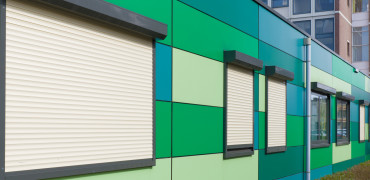In the current climate, the call for the construction industry to change is louder than ever and this is mirrored in the general talk of a ‘green recovery’ for the nation.
To date though, the construction industry as a whole seems continually unwilling to guide its resources (both financial and time-wise) towards new innovations and this reluctance causes and creates many problems.
With lockdown easing but still likely in some capacity for the near future the need for adapting to new techniques is more apparent than ever.
If we are unable to continue to work in the same way and social distancing demands a change to construction sites, then we need to widen the possibilities and look for new solutions.
Prefabrication and Modular construction could be one immediately accessible and completely viable possibility.
And none of the wasted time waiting weeks for everything to dry
In praise of prefab
Prefabrication, or “Prefab” for short, refers to a construction process where some building elements and components are built off-site and then shipped to a construction site for installation there.
These buildings have many advantages over the current methods of construction and could remove the need for heavy on site manpower.
A prefabricated construction also delivers more precise quality and timing, regardless of the weather, and there are also obvious benefits in lowering the environmental impact due to reduced waste, air, water and noise pollution.
Building these components in a factory also means that production can happen around the clock, significantly increasing production levels.
And factory jobs are easier for anyone to do, whether female, disabled, part-time, or full-time. This method of production will create far more jobs for a greater variety than any building site could ever hope to do.
Streamlining timing
With Volumetric Construction, where the majority of the buildings components are fabricated off site in factory controlled conditions, all the internal finishes arrive completed and no further trades come onto site after delivery.
No more plasterers. No more screed, No more paint. And none of the wasted time waiting weeks for everything to dry.
Project schedules can also be streamlined as the completion date for each element will be well known in advance.
Whilst the groundwork on the site is being prepared, each building component can be fabricated and this will ultimately lead to less logistics challenges and fewer crews and overall deliveries will be needed.
Above all increased site safety will be possible through limited exposure to people and working conditions. A safe social distance will also be much more manageable.
This greatly reduces the number of people on site providing certainty and safety in the shadow of Covid 19.
Changing attitudes
The once snubbed and outdated attitudes to modular Buildings now need to be revisited with a view to a more sustainable and safe future.
The ongoing construction of modular buildings works alongside simultaneous, multi-site works, which allows for multiple projects to be completed in half the time, helping the nation achieve the homes we need more quickly, or the schools to get the extra classrooms they need, or the new hospital wards, etc, etc.
The factory controlled process is also both greener and socially safer, with modular building allowing for tighter construction all round.
Projects can be completed up to 50% sooner than traditional construction. Buildings can be occupied sooner.
All-in-all, modular construction is highly sustainable and energy-efficient, combining low-maintenance materials with cutting-edge technology for both exceptional performance and comfort.
At the same time, modular buildings are built to meet or exceed the same building codes and standards as site structures. Modular construction is smarter.
After COVID
With the Government’s guidelines for construction sites now clear, employers need to ensure their workers are able to keep to a 2m social distance. They should ensure their workers can travel in line with this advice, and it has been suggested that we must stagger site hours to reduce public transport issues.
Construction sites have also been asked to close if work cannot continue safely.
So just how can traditional site working methods even be possible at the moment? And how can traditional construction possibly answer the needs for more homes, expanded schools and a more sustainable future?
The modular construction sector has long argued just how effective and sustainable it can be for the nation, but its growth has been slow but steady.
Perhaps the unforeseen events of 2020 might accelerate our need and pique our attention once more.
Surely now is the time we ask ourselves – can Modular and Prefabrication be the most progressive and sustainable solution after all?
Kirsty Hammond is publisher and editor of Specifier Review


